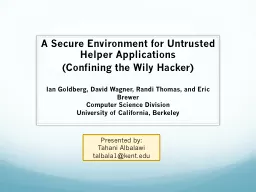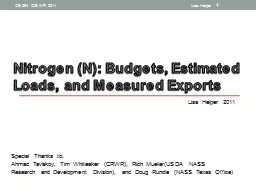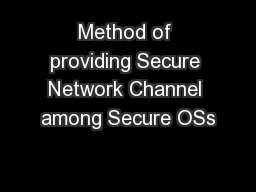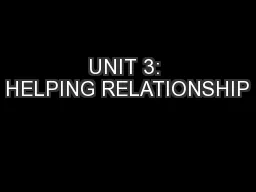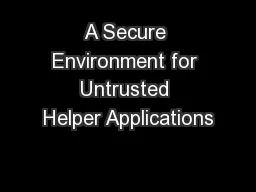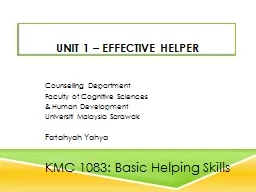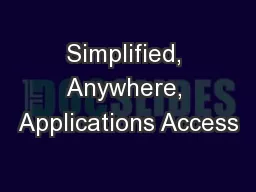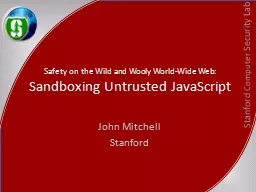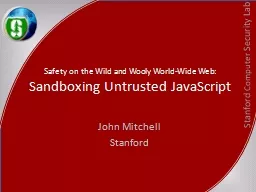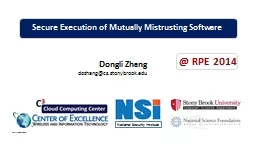PPT-A Secure Environment for Untrusted Helper Applications
Author : min-jolicoeur | Published Date : 2016-08-06
Confining the Wily Hacker Ian Goldberg David Wagner Randi Thomas and Eric Brewer Computer Science Division University of California Berkeley Presented by Tahani
Presentation Embed Code
Download Presentation
Download Presentation The PPT/PDF document "A Secure Environment for Untrusted Helpe..." is the property of its rightful owner. Permission is granted to download and print the materials on this website for personal, non-commercial use only, and to display it on your personal computer provided you do not modify the materials and that you retain all copyright notices contained in the materials. By downloading content from our website, you accept the terms of this agreement.
A Secure Environment for Untrusted Helper Applications: Transcript
Download Rules Of Document
"A Secure Environment for Untrusted Helper Applications"The content belongs to its owner. You may download and print it for personal use, without modification, and keep all copyright notices. By downloading, you agree to these terms.
Related Documents

